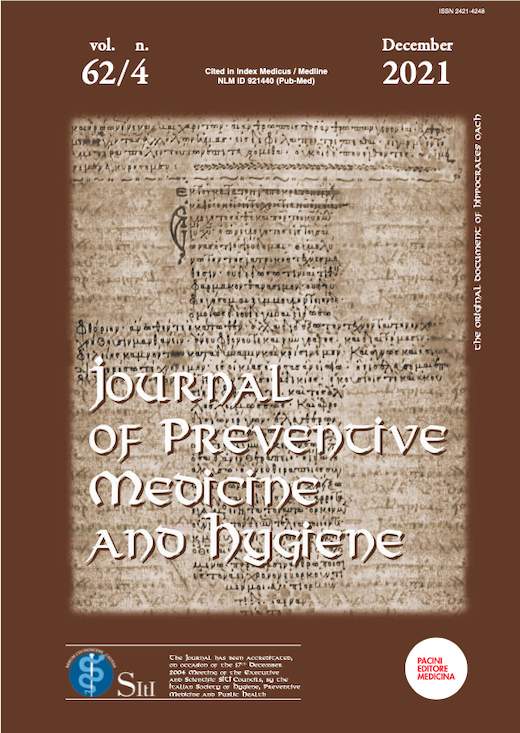Abstract
Introduction. Surveillance of health care-associated infections (HAIs) is an essential part of an efficient healthcare system. This study is an update on incidence and mortality rates of HAIs in Iran in 2018.
Methods. Almost all hospitals across the country (940 hospitals) entered the data of HAIs and denominators to the Iranian Nosocomial Infections Surveillance (INIS) software. Statistics were derived from INIS.
Results. From 9,607,213 hospitalized patients, 127,953 suffered from HAI, 15.65% of whom died. The incidence rate of HAI was calculated as 4.2 per 1000 patient-days. Considering relative frequencies among HAIs, Pneumonia (29.1%) and UTIs (25.6%) were the most common types of infection. Ventilator-associated pneumonia (VAP) was the most frequent device-associated infection (DAI) 25.66 per 1000 ventilator-days, and had the highest mortality rate (43.08%). Incidence density of other DAIs was 5.43 for catheter-associated UTI and 2.86 for catheter-associated BSI per 1000 device-days. Medical ICUs had the highest incidence and percentage of deaths (15.35% and 37.63%, respectively). The most causative organisms were Escherichia coli, Acinetobacter baumannii, and Klebsiella pneumonia. The rate of methicillin-resistance Staphylococcus aureus (MRSA), vancomycin-resistant Enterococcus (VRE), and Klebsiella pneumoniae carbapenemase (KPC)-producing bacteria was about 49%, 57%, and 58% respectively.
Conclusion. The findings indicate that HAIs in Iran require special attention, and further studies are needed to evaluate them more accurately, identify risk factors and preventive interventions.
References
[2] Shang J, Stone P, Larson E. Studies on nurse staffing and health care-associated infection: methodologic challenges and potential solutions. Am J Infect Control 2015;43:581-588. https://dx.doi.org/10.1016/j.ajic.2015.03.029
[3] Umscheid CA, Mitchell MD, Doshi JA, Agarwal R, Williams K, Brennan PJ. Estimating the proportion of healthcare-associated infections that are reasonably preventable and the related mortality and costs. Infect Control Hosp Epidemiol 2011;32:101-114. https://doi.org/10.1086/657912
[4] Zahraei SM, Eshrati B, Masoumi Asl H, Pezeshki Z. Epidemiology of four main nosocomial infections in Iran during March 2007 - March 2008 based on the findings of a routine surveillance system. Arch Iran Med 2012;15:764-766. https://pubmed.ncbi.nlm.nih.gov/23199249/
[5] Magill SS, O'Leary E, Janelle SJ, Thompson DL, Dumyati G, Nadle J, Wilson LE, Kainer MA, Lynfield R, Greissman S, Ray SM, Beldavs Z, Gross C, Bamberg W, Sievers M, Concannon C, Buhr N, Warnke L, Maloney M, Ocampo V, Brooks J, Oyewumi T, Sharmin S, Richards K, Rainbow J, Samper M, Hancock EB, Leaptrot D, Scalise E, Badrun F, Phelps R, Edwards JR. Emerging Infections Program Hospital Prevalence Survey T: Changes in Prevalence of Health Care-Associated Infections in U.S. Hospitals. N Engl J Med 2018;379:1732-1744. https://doi.org/10.1056/nejmoa1801550
[6] Iranian Center for Communicable Diseases (ICDC) . National Nosocomial Infections Surveillance System. Tehran: MOHME Press; 2007. Farsi. Available from https://www.who.int/patientsafety/events/media/iran_infection_surv.pdf?ua=1
[7] Masoumi Asl H. The National Nosocomial Infections Surveillance in Iran. A 4 years report. BMC Proc 2011;5:P243. https://dx.doi.org/10.1186/1753-6561-5-S6-P243
[8] Seifi A, Dehghan-Nayeri N, Rostamnia L, Varaei S, Akbari Sari A, Haghani H, Ghanbari V. Health care-associated infection surveillance system in Iran: Reporting and accuracy. Am J Infect Control 2019;47:951-955. https://doi.org/10.1016/j.ajic.2018.12.028
[9] Iranian CDC. Iran Nosocomial Infections Surveillance Software (INIS) [Software]. Available from http://inis.health.gov.ir , Accessed May 26, 2020,
[10] Eshrati B, Masoumi Asl H, Afhami S, Pezeshki Z, Seifi A. Health care-associated infections in Iran: A national update for the year 2015. Am J Infect Control 2018;46:663-667. https://doi.org/10.1016/j.ajic.2017.11.017
[11] Jay SJ. Nosocomial infections. Med Clin North Am 1983;67:1251-1277. https://doi.org/10.1016/s0025-7125(16)31152-x
[12] World Health Organization. Report on the burden of endemic health care-associated infection worldwide. 2011. Available from https://apps.who.int/iris/handle/10665/80135 Accessed May 26, 2020
[13] Lahsaeizadeh S, Jafari H, Askarian M. Healthcare-associated infection in Shiraz, Iran 2004-2005. J Hosp Infect 2008;69:283-287. https://doi.org/10.1016/j.jhin.2008.05.006
[14] Jahani-Sherafat S, Razaghi M, Rosenthal VD, Tajeddin E, Seyedjavadi S, Rashidan M, Alebouyeh M, Rostampour M, Haghi A, Sayarbayat M, Farazmandian S, Yarmohammadi T, Arshadi FK, Mansouri N, Sarbazi MR, Vilar M, Zali MR. Device-associated infection rates and bacterial resistance in six academic teaching hospitals of Iran: Findings from the International Nocosomial Infection Control Consortium (INICC). J Infect Public Health 2015;8:553-561. https://doi.org/10.1016/j.jiph.2015.04.028
[15] Afhami S, Seifi A, Hajiabdolbaghi M, Bazaz NE, Hadadi A, Hasibi M, Rezaie P, Mohamadnejad E, Ghahan A, Hajinoori M, Veyceh F, Adinehkharrat S, Hojjati Z, Azimbeik Z. Assessment of device-associated infection rates in four teaching hospitals in Islamic Republic of Iran. East Mediterr Health J. 2019;25(2):90–97. https://doi.org/10.26719/emhj.18.015
[16] Salmanzadeh S, Yousefi F, Ahmadi F, Geravandi S, Moien M, Mohammadi MJ, Mahmmodi Kohi A, Alavi SMA, Mohamadrezai Esfarjani N. Evaluation of Nosocomial Infections in a Teaching Hospital. Avicenna J Clin Microbiol Infect 2015;2:-. Available from http://ajcmi.umsha.ac.ir/PDF/ajcmi-2-29760.pdf
[17] Japoni A, Vazin A, Davarpanah MA, Afkhami Ardakani M, Alborzi A, Japoni S, Rafaatpour N. Ventilator-associated pneumonia in Iranian intensive care units. J Infect Dev Ctries 2011;5:286-293. https://doi.org/10.3855/jidc.1212
[18] Owens CD, Stoessel K. Surgical site infections: epidemiology, microbiology and prevention. J Hosp Infect 2008;70 Suppl 2:3-10. https://doi.org/10.1016/s0195-6701(08)60017-1


